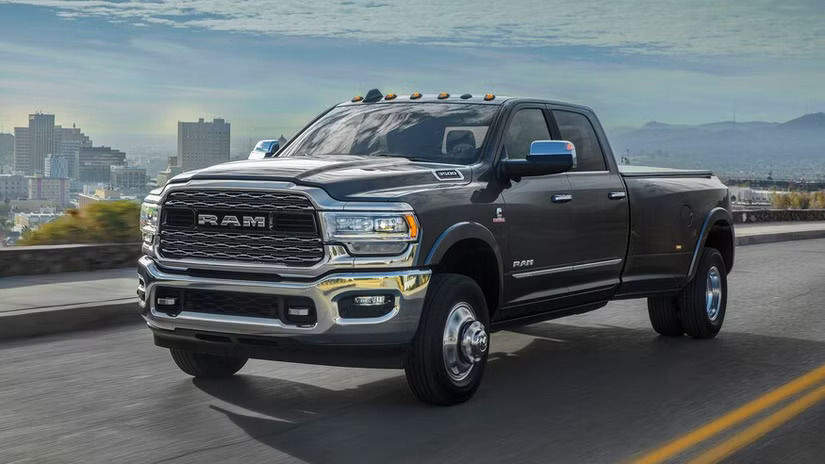Pickup trucks have played an essential role in transportation and labor for many decades, serving as workhorses for businesses, farmers, contractors, and outdoor enthusiasts alike.
Their ability to haul heavy loads, tow trailers, and traverse challenging terrain has made them indispensable in a variety of settings.
Yet, not all pickups are created equally. The components that make up these vehicles, from the frame to the suspension, drivetrain, and braking systems, can differ significantly in strength, durability, and quality.
These differences are crucial because they determine how well a truck performs under strain and how long it lasts without costly repairs. Buyers who are aware of which pickups incorporate truly heavy-duty parts and which rely on weaker components can make smarter purchasing decisions tailored to their needs.
When manufacturers build heavy-duty pickups, they typically focus on ensuring that every major part is designed for toughness and endurance. This means using thicker steel for the frame, stronger suspensions to carry weight without sagging, and powerful engines paired with transmissions that can handle prolonged stress.
Heavy-duty pickups often include features like reinforced axles, locking differentials, upgraded brakes with better heat management, and enhanced cooling systems to protect vital components from overheating.
These trucks are engineered to operate reliably even under harsh conditions, such as long hauls, uneven terrain, or extreme weather. Their parts are also designed to resist wear and tear over time, giving these vehicles a reputation for longevity and dependability.
On the other hand, many pickups are designed with a different set of priorities, such as fuel efficiency, affordability, or ride comfort. While these vehicles serve well in daily driving or light-duty hauling, the parts used may not withstand heavy use or stress as effectively.
Weaker components can manifest as thinner frames that flex or crack, suspension parts that wear out quickly or sag under load, transmissions prone to overheating or slipping, and brakes that fade under heavy braking.
These weaknesses can lead to breakdowns, safety concerns, and expensive repairs that frustrate owners. Understanding which pickups fall short in component strength is important for anyone who needs a vehicle for demanding jobs or prolonged heavy-duty use.
This article takes a closer look at five pickups widely recognized for their heavy-duty parts and robust build quality. These trucks have earned respect in commercial, agricultural, and recreational markets for their ability to endure tough conditions and heavy workloads.
Following this, we examine five pickups that have been reported to use weaker components, which often results in lower reliability under stress and greater maintenance needs.
By highlighting both ends of the spectrum, this article aims to provide a clearer picture of the strengths and weaknesses in pickup construction, helping readers choose the right truck for their purposes.
Also Read: Top 10 Cars With Durable Upholstery Offering Long-Lasting Interiors
5 Pickups With Heavy-Duty Parts
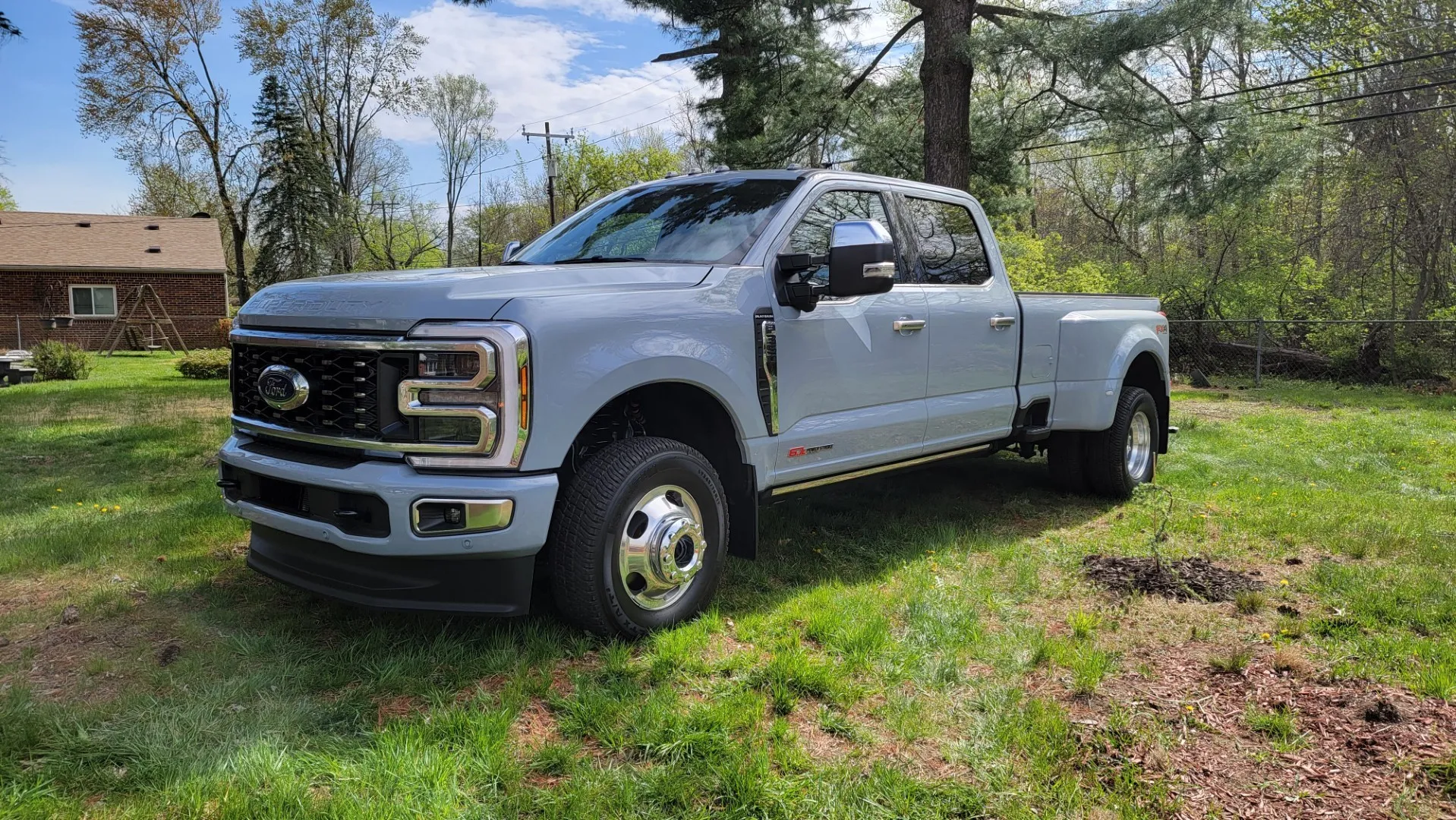
1. Ford F-350 Super Duty
The Ford F-350 Super Duty is a prime example of a pickup truck built for serious work and long-term durability. One of its standout features is its frame, which is constructed from fully boxed, high-strength steel designed to resist twisting and bending even under extreme loads.
This frame forms the backbone of the truck’s ability to support massive payloads, often exceeding 7,500 pounds, and tow trailers weighing upwards of 30,000 pounds when properly equipped.
The solid foundation provided by the frame is essential because it ensures the truck maintains structural integrity under high stress, something vital for safety and performance.
The suspension system on the F-350 further reinforces its heavy-duty credentials. The rear suspension typically uses multi-leaf springs that are thicker and more numerous than those on lighter trucks, providing better load distribution and reducing the risk of sagging or instability.
The front suspension employs a solid axle design with heavy-duty components to improve durability and ensure predictable handling, even with a full load. These suspension elements not only allow the truck to carry and tow heavy weights but also help maintain ride quality to reduce driver fatigue during long hauls.
Under the hood, the F-350 is commonly equipped with the 6.7-liter Power Stroke V8 Turbo Diesel engine, which delivers exceptional torque and horsepower numbers. This engine is paired with a 10-speed heavy-duty automatic transmission that is engineered to withstand the stresses of towing and hauling.
The transmission includes advanced cooling and lubrication systems to reduce wear and prevent overheating during extended use. Additionally, the drivetrain components such as the axles, drive shafts, and differentials, are reinforced with heavy-duty materials and designs, often including locking or limited-slip differentials to provide improved traction in demanding environments.
Braking is another critical area where the F-350 excels. It uses large disc brakes on all four wheels with enhanced cooling mechanisms, such as ventilated rotors, to prevent brake fade during prolonged or heavy braking situations like descending steep grades with a trailer attached.
This braking system offers the stopping power necessary to handle the truck’s massive weight safely. The cooling systems for both the engine and transmission are upgraded as well, ensuring that the truck can sustain heavy workloads without overheating or component failure.
Owners of the Ford F-350 Super Duty often praise its reliability, ruggedness, and ability to handle intense workloads with minimal downtime. This truck has proven itself in construction sites, farms, and other heavy-duty environments where failure is not an option.
While the F-350 may come with a higher price tag and a stiffer ride than lighter trucks, the investment in heavy-duty components pays off with a vehicle that can withstand years of hard use without significant issues.
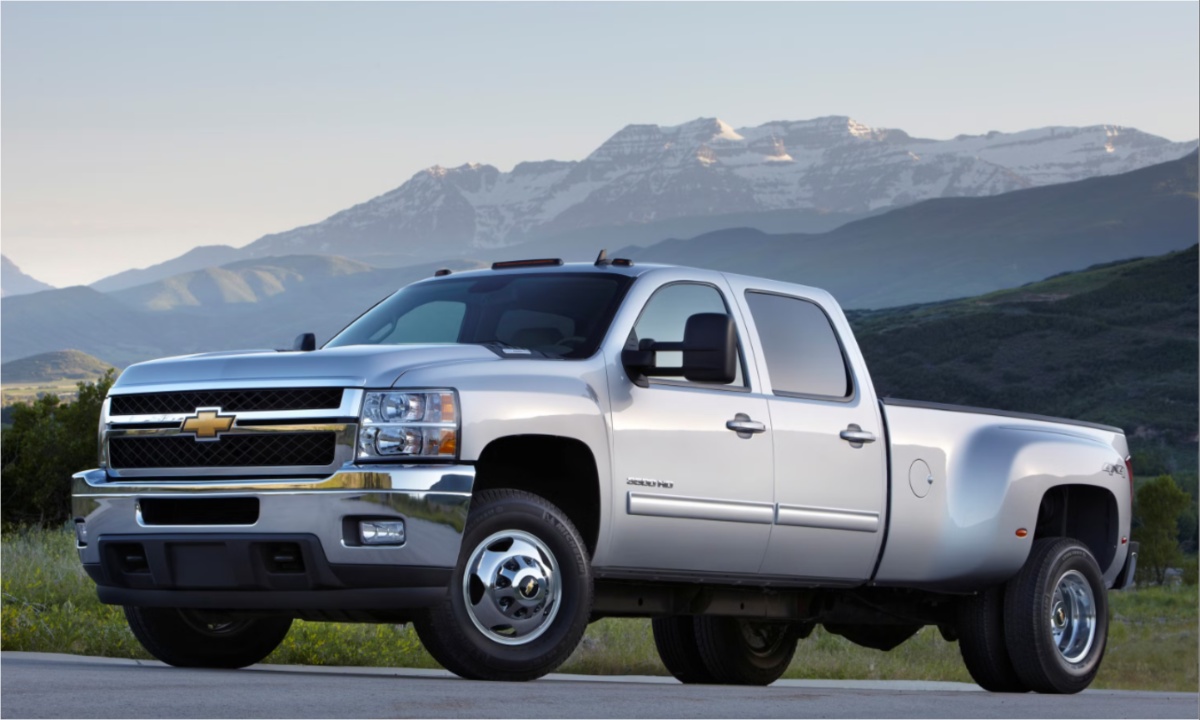
2. Chevrolet Silverado 3500HD
The Chevrolet Silverado 3500HD is another top-tier heavy-duty pickup that has earned a reputation for its tough build and reliable performance under demanding conditions.
The foundation of this truck is a frame made from high-strength steel, carefully engineered to resist bending and fatigue even when carrying substantial payloads.
This frame supports towing capacities that can exceed 35,000 pounds when paired with the right equipment, making the Silverado 3500HD a serious contender in the heavy-duty pickup segment.
Its suspension system is designed to complement the strong frame by using multi-leaf springs that are thick and numerous enough to maintain stability under heavy loads. This prevents the rear from sagging when the truck is fully loaded and improves handling.
The front suspension includes a solid axle with heavy-duty components that offer durability and strength, allowing the Silverado to maintain control even on rough or uneven terrain. These suspension parts are built to absorb the shocks and stresses of construction sites, farms, and long-distance hauling.
One of the standout features of the Silverado 3500HD is its engine options, particularly the 6.6L Duramax Turbo-Diesel V8. This engine produces high torque output, essential for towing heavy trailers and hauling significant loads.
The engine is paired with the Allison 10-speed automatic transmission, widely praised for its durability, smooth shifting, and ability to handle heavy workloads without overheating or slipping. The transmission includes multiple cooling circuits to keep temperatures down during intense use.
The driveline components, including the axles and differentials, are reinforced to withstand the engine’s power and the rigors of towing heavy trailers. Limited-slip or locking differentials enhance traction, allowing the Silverado to perform well in off-road or slippery conditions.
The braking system features large, ventilated disc brakes that offer excellent stopping power and resist fading when the brakes are used extensively, such as on downhill descents with heavy trailers.
Additionally, the Silverado 3500HD integrates towing-specific features such as trailer brake controllers, advanced tow/haul driving modes, and upgraded cooling systems to protect the engine and transmission during heavy use.
The result is a pickup that delivers strong performance, durability, and reliability, making it a favorite among professionals who depend on their truck every day.
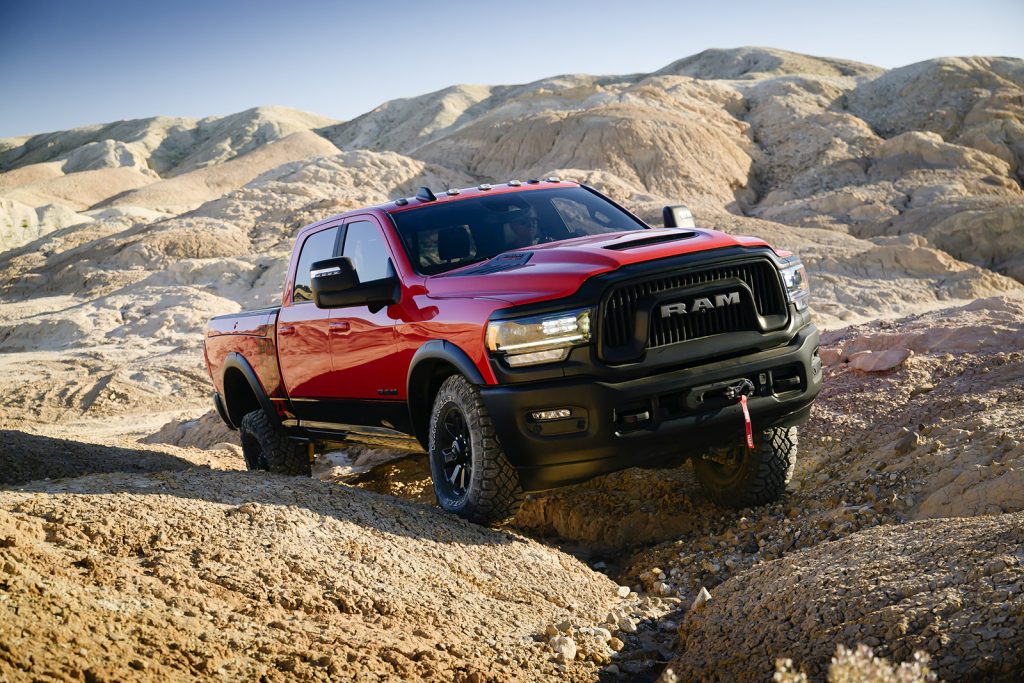
3. Ram 3500 Heavy Duty
The Ram 3500 Heavy Duty is known for combining powerful performance with a rugged build, making it a favorite among those who need a pickup that can handle the toughest tasks.
The truck’s fully boxed steel frame offers outstanding stiffness and resistance to bending or twisting, which is crucial when towing large trailers or carrying heavy payloads. This frame enables the Ram 3500 to maintain structural integrity even under the most demanding conditions.
Ram’s suspension system on the 3500 includes multi-leaf rear springs designed to distribute weight evenly and prevent the truck from sagging under load.
The front suspension typically uses a solid axle with either coil springs or an optional air suspension setup, providing a balance between durability and ride comfort. This system helps the truck remain stable even when heavily loaded, improving safety and drivability.
The powertrain is one of the Ram 3500’s biggest strengths. The available Cummins 6.7L Turbo Diesel engine is known for its high torque output and longevity, making it ideal for towing large trailers and hauling heavy loads.
This engine is matched with the Aisin 6-speed automatic transmission, which is renowned for its toughness and ability to handle the stresses of heavy-duty work. The drivetrain components, including axles and differentials, are designed with reinforced parts to handle the high torque and power delivered by the engine.
Braking systems on the Ram 3500 are equipped with large disc brakes and cooling features to prevent fade during repeated or heavy braking sessions.
Cooling systems for the engine and transmission are also upgraded, which protects against overheating during long periods of towing or hauling. These features contribute to the truck’s ability to perform reliably under demanding conditions without frequent breakdowns.
Ram’s focus on building a heavy-duty pickup with strong components has paid off with a vehicle that many users consider one of the most durable and capable in the market.
Its combination of power, toughness, and advanced engineering makes it a top choice for commercial users and those who require a dependable work truck.
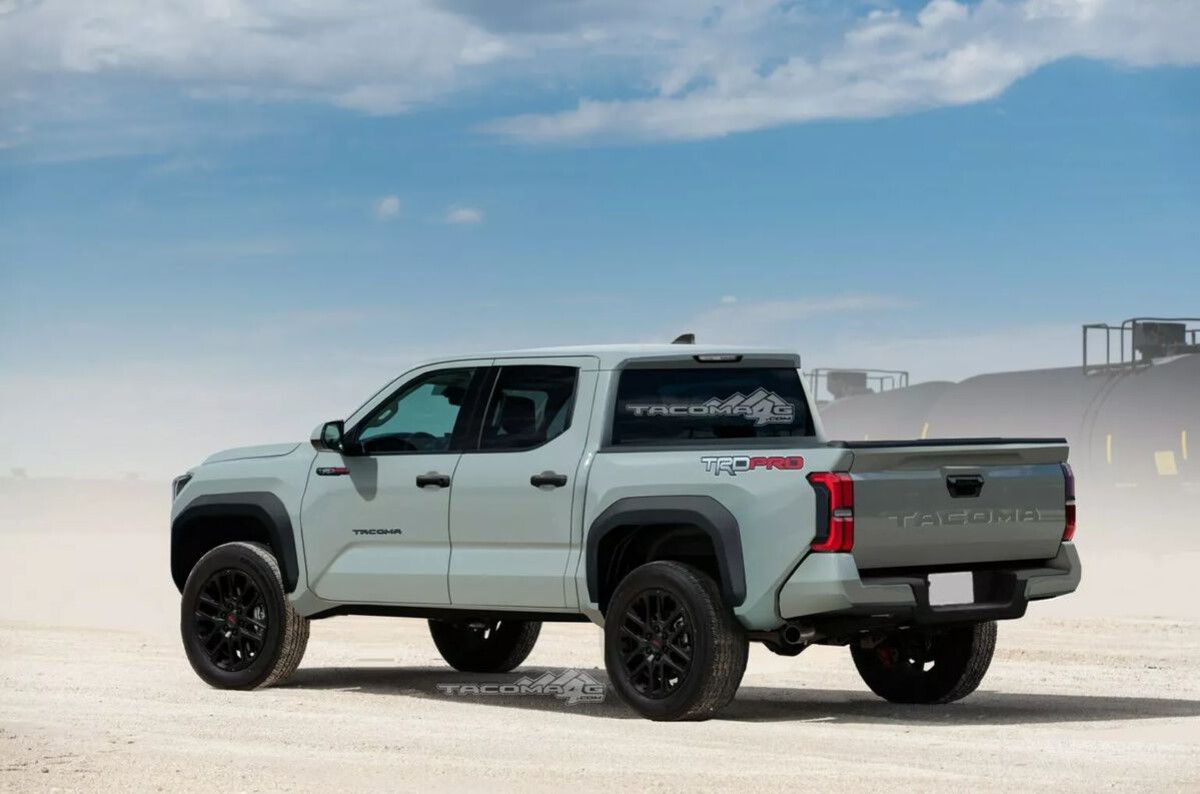
4. Toyota Tundra TRD Pro
Although it is often grouped with lighter-duty pickups, the Toyota Tundra TRD Pro offers surprisingly strong heavy-duty components that set it apart in its class.
The truck’s frame is made from high-strength steel and reinforced in key areas to improve durability, particularly on the TRD Pro model, which includes additional underbody protection to shield critical parts from rocks and debris. This reinforcement is especially useful for off-road use, where terrain can be unpredictable and rough.
The suspension on the Tundra TRD Pro is upgraded with FOX internal bypass shocks and reinforced springs, designed to absorb impacts and maintain stability on challenging terrain.
These suspension components are built to handle rough off-road trails and heavy loads, providing both durability and improved ride quality. The suspension design also helps the truck maintain ground clearance and control, important features for both off-roaders and those using the truck for moderate hauling.
Under the hood, the Tundra TRD Pro typically uses a 5.7L i-Force V8 engine that balances power and reliability. While it may not have the extreme torque figures of larger diesel engines found in heavy-duty American pickups, the Tundra’s drivetrain components are robust and built for longevity.
The automatic transmission paired with this engine is designed to handle the power output while providing smooth shifts and dependable performance.
The braking system on the Tundra TRD Pro includes ventilated disc brakes on all four wheels, with components that offer strong and consistent stopping power even under demanding conditions.
Its cooling systems are engineered to prevent overheating during heavy use, such as towing or driving in mountainous terrain. The truck’s combination of heavy-duty parts and reliable engineering has earned it a reputation for durability, particularly among those who value off-road capability combined with moderate hauling and towing.
For users who want a pickup that blends rugged off-road hardware with solid construction, the Toyota Tundra TRD Pro stands out as a tough, dependable option in the midsize category.

5. Nissan Titan XD
The Nissan Titan XD occupies a unique space between traditional half-ton and three-quarter-ton pickups, and it is equipped with several components that reflect its heavy-duty ambitions.
The truck’s frame is reinforced and thicker than that found on typical light-duty pickups, providing a strong base capable of handling larger payloads and towing demands. This strengthened frame improves the truck’s resistance to bending or damage under load, enhancing its durability and safety.
The Titan XD’s suspension system uses multi-leaf springs at the rear, designed to support heavier payloads without excessive sagging.
The front suspension includes upgraded shocks and springs for improved handling and ride quality, even when the truck is carrying or towing heavy loads. These suspension parts are tougher than those found on many midsize pickups and contribute to the Titan XD’s ability to maintain stability and control.
Nissan offers a 5.0L Cummins Turbo Diesel V8 engine for the Titan XD, which delivers strong torque numbers necessary for towing heavy trailers or hauling large loads.
This engine is paired with a 6-speed heavy-duty automatic transmission that is built to withstand the stresses of towing and heavy payloads without slipping or overheating. The drivetrain components, including reinforced axles and a locking rear differential, improve traction and durability in challenging conditions.
The braking system includes large disc brakes with advanced cooling designs to prevent brake fade during extended use, which is critical for safety when hauling heavy loads. The truck’s cooling systems are upgraded to protect the engine and transmission from overheating during tough tasks, increasing the truck’s reliability in demanding scenarios.
While the Nissan Titan XD may not have the brand recognition of some competitors in heavy-duty markets, its combination of reinforced components and powerful engine options makes it a solid choice for buyers seeking a pickup with strong heavy-duty capability without moving into the largest truck segment.
Also Read: 5 Cars With Effective Air Filtration and 5 That Circulate Dust
5 Pickups That Use Weak Components
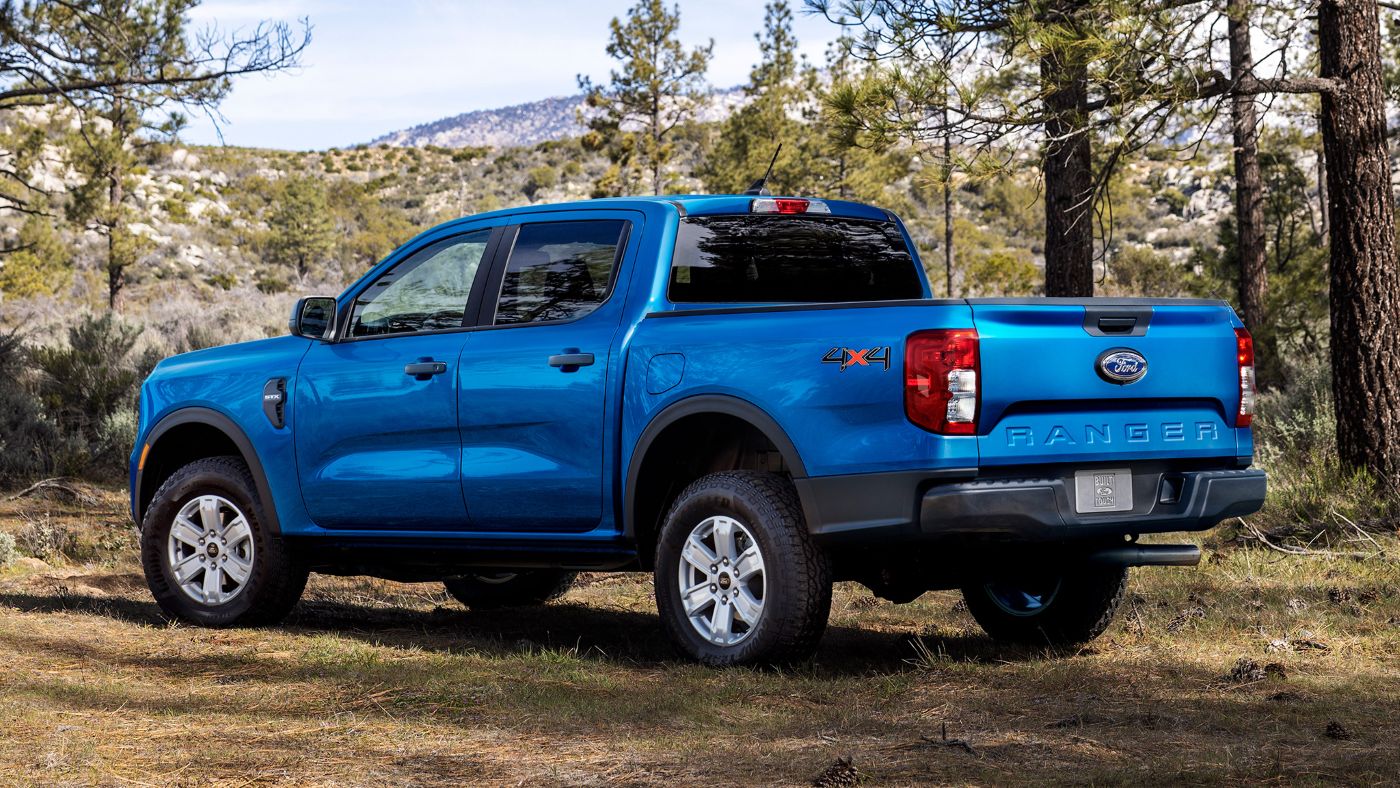
1. Ford Ranger (Earlier Models)
The Ford Ranger, particularly in its earlier generations, was designed primarily as a light-duty midsize pickup, which means many of its components are not built to withstand heavy-duty use.
One of the main weaknesses is the frame, which is constructed from lighter-gauge steel compared to full-size trucks. This thinner frame can flex or develop cracks when subjected to heavy loads or extensive towing, leading to structural issues and safety concerns over time.
The suspension system on early Rangers uses smaller and softer springs combined with lighter-duty shock absorbers. While this setup offers a comfortable ride under normal driving conditions, it struggles when the truck is loaded with heavy cargo or used on rough terrain.
The suspension components can wear out quickly, causing sagging and a rougher ride, as well as premature failure of bushings, joints, and other parts.
The drivetrain in these early Rangers also reflects their light-duty design. The transmissions paired with the smaller four-cylinder or V6 engines are not engineered for prolonged heavy use and are prone to overheating, slipping, and premature wear under towing or hauling stress.
The differentials and axles are smaller and less robust than those found in larger trucks, leading to reliability issues if the truck is used beyond its design limits.
Braking systems on early Ford Rangers are smaller and less capable of dissipating heat compared to those on heavier pickups. When towing or carrying heavy loads, these brakes may overheat, leading to fade and longer stopping distances, which compromises safety.
Owners of these trucks have frequently reported issues with suspension wear, drivetrain failures, and rust, especially in regions with harsh weather.
For buyers seeking a truck for moderate work, the Ford Ranger remains a solid choice. However, its components generally lack the durability required for sustained heavy-duty use, and those expecting to tow or haul large loads may face frequent repairs and frustration.
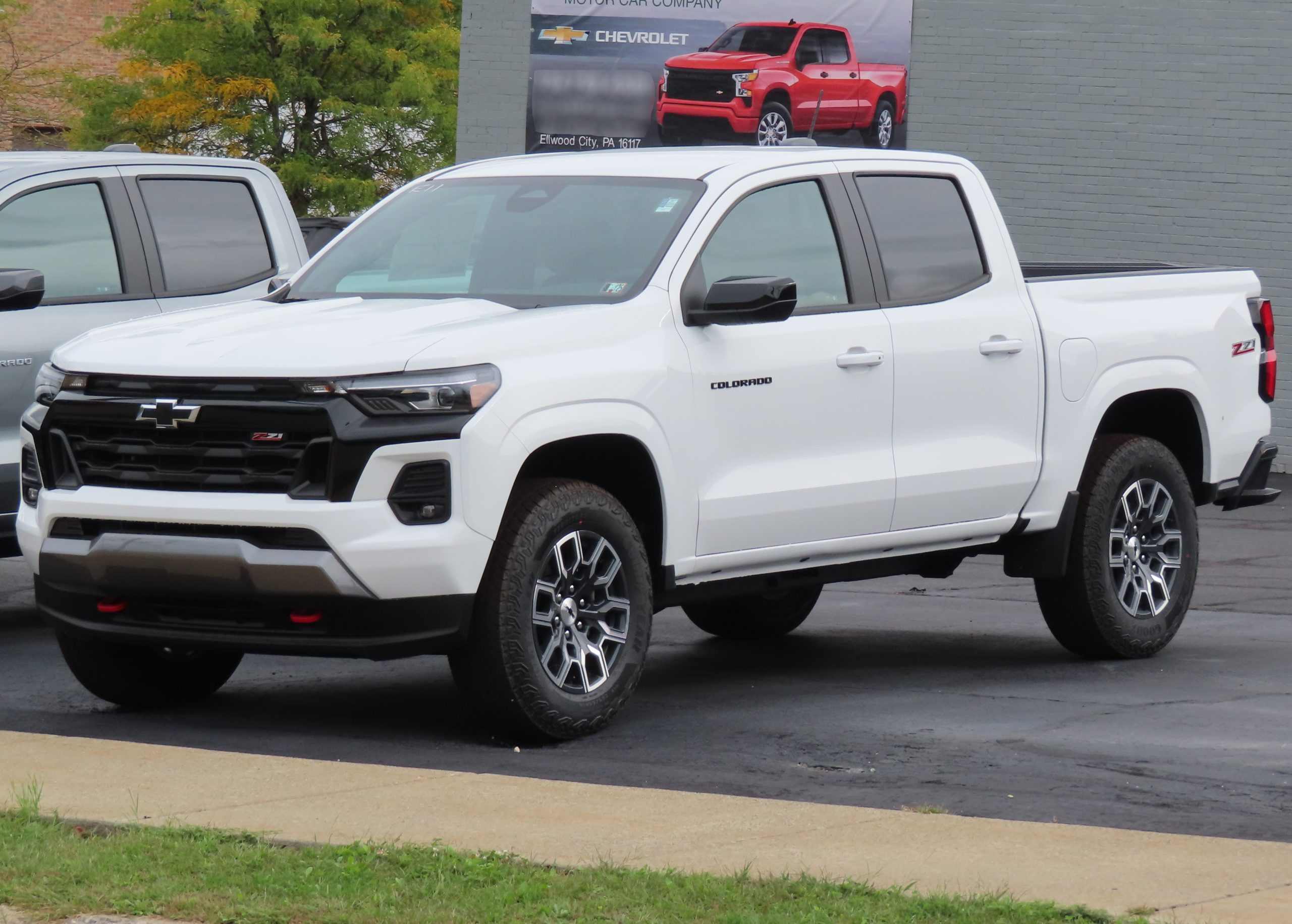
2. Chevrolet Colorado (First Generation)
The first-generation Chevrolet Colorado, while an important entry in the midsize pickup segment, has been criticized for its use of weaker components, especially when compared to full-size heavy-duty trucks.
Its frame is lighter and made from thinner steel, which makes it susceptible to bending and fatigue over time when subjected to heavy payloads or towing. In regions with exposure to road salt or moisture, this frame can rust and deteriorate more quickly than more robust alternatives.
The suspension on the early Colorado models is designed more for comfort than for carrying heavy weights. It features softer springs and smaller shock absorbers that can lead to sagging and accelerated wear when the truck is heavily loaded or used on rough roads. The suspension bushings and joints may fail prematurely under these conditions, reducing the truck’s reliability.
Drivetrain components, such as the transmission and axles, are lighter duty and less capable of handling continuous heavy loads.
This can result in transmission slipping or overheating, differential wear, and axle failures if the truck is used frequently for towing or hauling. The engine options, mostly four-cylinder and V6, provide adequate power for everyday driving but lack the torque and durability demanded by serious work.
Braking systems on the Colorado are adequate for light use but struggle under heavy-duty conditions. Smaller rotors and calipers may overheat during heavy braking, especially when towing trailers downhill, leading to brake fade and safety concerns. Cooling systems for the engine and transmission are also not designed for prolonged hard use.
Many owners of first-generation Colorados have experienced suspension and drivetrain issues after several years, especially if the truck was regularly used for work-related tasks. While the truck is well-suited for light to medium-duty use, its weaker components limit its capability as a true heavy-duty pickup.

3. Toyota Tacoma (Early Models)
The Toyota Tacoma is generally praised for its reliability and durability, but early models have some weaknesses in their components that limit their performance in heavy-duty scenarios.
The frame, though reasonably sturdy for a midsize pickup, is lighter and less reinforced than full-size trucks, which affects the vehicle’s ability to resist flexing or damage under heavy loads.
The suspension on early Tacomas includes smaller springs and shocks designed more for ride comfort and everyday driving.
These components tend to wear out faster when subjected to heavy payloads or towing, leading to sagging, poor handling, and the need for frequent replacements. Suspension bushings and joints may also fail sooner under these stresses, further diminishing durability.
Drivetrain parts such as transmissions and axles on early Tacomas are not built for continuous heavy use. Transmission slipping and overheating have been reported when the truck is pushed beyond moderate loads.
The engines available on these early models, typically four-cylinder or small V6s, provide adequate power for daily driving but lack the torque required for sustained heavy towing.
Braking systems on early Tacoma models are sufficient for light use but are prone to fading during heavy braking sessions, such as when towing or descending steep grades. Cooling systems for the powertrain are not heavily upgraded for prolonged hard use, which can contribute to overheating issues.
While the Toyota Tacoma remains a reliable midsize pickup, early models are better suited for moderate work rather than heavy-duty applications. Their weaker suspension and drivetrain components require owners to be mindful of the truck’s limits to avoid expensive repairs.
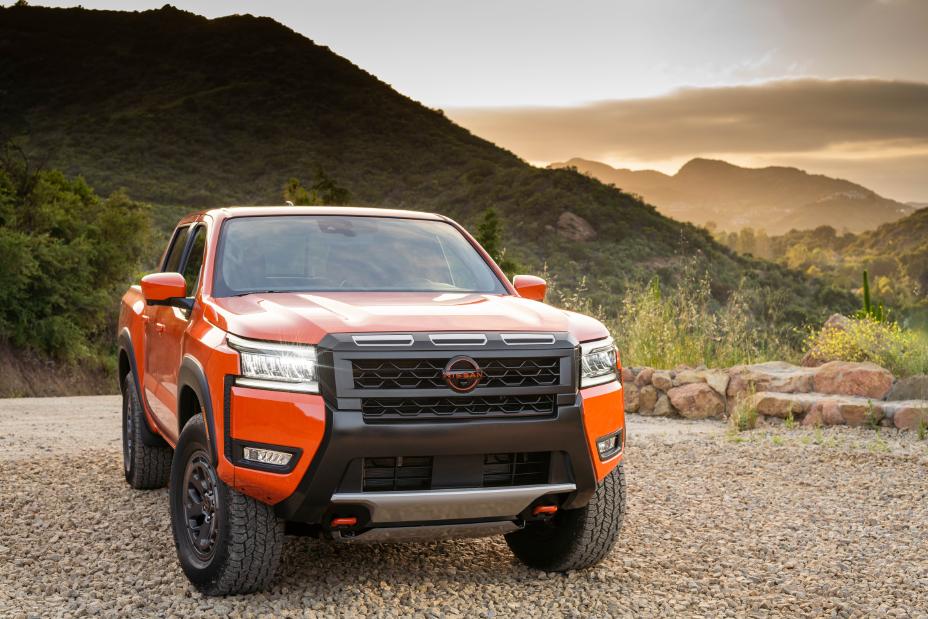
4. Nissan Frontier (Older Models)
The Nissan Frontier has long been viewed as a solid midsize truck for daily use, but older models have shown clear limitations when it comes to durability and component strength under heavy-duty conditions. One of the most frequent issues with early Frontiers is the frame design.
While the structure is suitable for average tasks, it lacks the heavy-duty reinforcements found in trucks intended for towing or regular hauling. Frame rust, especially in humid or salty environments, is a well-documented problem in earlier Frontiers.
This becomes a structural concern, as rust can weaken the frame to the point where load-bearing ability is compromised. There were even recalls related to frame rust on certain model years, especially those built before 2010.
The suspension system on older Frontiers is basic and not built to handle serious off-road or load-bearing stress. It uses a front independent setup with basic coil springs and a rear leaf spring system that is relatively soft. Under heavy use, these components wear out faster than expected.
Bushings, ball joints, and shocks all tend to degrade quickly when exposed to constant loads or uneven terrain.
Owners have also reported sagging in the rear suspension over time when frequently hauling cargo. Additionally, the limited ground clearance and lack of underbody protection make the Frontier less suited for rugged environments.
The powertrain is another area where older Frontiers fall short for those seeking long-term durability. While the 4.0L V6 engine offers decent performance for light use, it’s not built for consistent towing or extended high-stress operation.
The five-speed automatic transmission paired with this engine is serviceable but lacks the heavy-duty internals needed for serious towing.
Under high thermal loads or repeated heavy use, these transmissions are prone to overheating or developing early slipping issues. Unlike the transmissions in larger trucks, there’s less headroom in the design for long-term reliability under demanding conditions.
Braking components are another weak point. The discs and calipers on older Frontier models are relatively small, which limits stopping performance when towing or descending steep grades.
Brake fade and premature pad wear are common, particularly for users who push the truck beyond basic commuting or weekend tasks. While the Nissan Frontier has its place as a dependable midsize truck for light use, older models are not built to perform under the demands expected from true heavy-duty trucks.

5. GMC Canyon (First Generation)
The first-generation GMC Canyon was launched alongside its sibling, the Chevrolet Colorado, as a smaller alternative to full-size trucks.
While it delivered good fuel economy and a more maneuverable footprint, the trade-off came in the form of weaker mechanical components that simply weren’t designed for heavy-duty tasks.
The frame on the first-gen Canyon is less rigid than that of most full-size trucks. It’s made from thinner gauge steel, and although boxed in certain areas, it lacks the reinforcements needed to handle serious payloads or repeated towing.
This structural weakness leads to frame flex under load, which can eventually contribute to alignment issues and even frame fatigue.
The suspension setup on the early Canyon is relatively soft and uses smaller components that wear out faster under pressure. The front suspension employs control arms and ball joints that are adequate for normal driving, but tend to degrade quickly when used for construction work, trailer hauling, or heavy loads.
Rear leaf springs on these models are also basic in design, often leading to rear-end sagging and a bouncy ride when the truck is fully loaded. The shocks used are not particularly heavy-duty either, meaning they lose effectiveness faster than those on more work-focused pickups.
Under the hood, the first-gen GMC Canyon typically came with smaller engines like a 2.8L or 3.5L inline-5 or V6, all of which struggled with high loads. These engines were never meant for towing heavy trailers or climbing steep grades with a full bed of materials.
Coupled with light-duty automatic transmissions, they lacked the strength and heat resistance needed for prolonged stress.
Many users who attempted to tow near the upper limits of the truck’s advertised capacity experienced transmission overheating and failure. While the vehicle might perform fine under minimal load, it clearly wasn’t designed for consistent use under strain.

